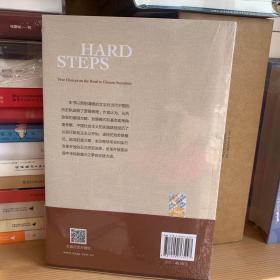
Earthquake Disaster Simulation of Civil Infrastructures(From Tall Buildings to Urban Areas Second Editon)
正版保障 假一赔十 可开发票
¥ 367.06 6.3折 ¥ 580 全新
库存7件
送至北京市朝阳区
运费快递 ¥5.50
作者Xinzheng Lu,Hong Guan[著]
出版社科学出版社
ISBN9787030684325
出版时间2021-01
装帧平装
开本16开
定价580元
货号11034723
上书时间2024-12-23
评价6523好评率 99.82%
- 最新上架
商品详情
- 品相描述:全新
- 商品描述
-
目录
1 Introduction
1.1 Research Background
1.2 Significance and Implication of Earthquake Disaster Simulation of Civil Infrastructures
1.3 Research Framework and Outlines
References
2 High-Fidelity Computational Models for Earthquake Disaster Simulation of Tall Buildings
2.1 Introduction
2.2 Fiber-Beam Element Model
2.2.1 Fundamental Principles
2.2.2 Uniaxial Stress-Strain Model of Concrete
2.2.3 Uniaxial Stress-Strain Model of Steel Reinforcement
2.2.4 Validation Through Reinforced Concrete Specimens
2.2.5 Stress-Strain Model of Composite Components
2.2.6 Steel Fiber-Beam Element Model Considering the Local Buckling Effect
2.3 Multi-layer Shell Model
2.3.1 Fundamental Principles
2.3.2 High-Performance Flat Shell Element NLDKGQ
2.3.3 High-Performance Triangular Shell Element NLDKGT
2.3.4 Constitutive Models of Concrete and Steel
2.3.5 Implementation of Multi-layer Shell Element in OpenSees
2.3.6 Validation Through Reinforced Concrete Specimens
2.3.7 Collapse Simulation of an RC Frame-Core Tube Tall Building
2.4 Hysteretic Hinge Model
2.4.1 Overview
2.4.2 The Proposed Hysteretic Hinge Model
2.4.3 Validation of the Proposed Hysteretic Hinge Model
2.5 Multi-scale Modeling
2.5.1 Overview
2.5.2 InterfaceModeling
2.6 Element Deactivation and Collapse Simulation
2.6.1 Element Deactivation for Component Failure Simulation
2.6.2 Visualization of the Movement of Deactivated Elements Using Physics Engine
2.7 GPU-Based High-Performance Matrix Solvers for OpenSees
2.7.1 Fundamental Conception of General-Purpose Computing on GPU (GPGPU)
2.7.2 High-Performance Solver for the Sparse System of Equations (SOE) in OpenSees
2.7.3 Case Studies
2.8 Physics Engine-Based High-Performance Visualization
2.8.1 Overview
2.8.2 Overall Visualization Framework
2.8.3 Clustering-Based Key Frame Extractions
2.8.4 Parallel Frame Interpolation
2.9 Summary
References
3 Earthquake Disaster Simulation of Typical Supertall Buildings
3.1 Introduction
3.2 Earthquake Disaster Simulation of the Shanghai Tower
3.2.1 Overview of the Shanghai Tower
3.2.2 Finite Element Model of the Shanghai Tower
3.2.3 Earthquake-Induced Collapse Simulation
3.2.4 Impact of Soil–Structure Interaction
3.3 Earthquake Disaster Simulation and Design Optimization of the CITIC Tower
3.3.1 Introduction of the CITIC Tower
3.3.2 Different Lateral Force Resisting Systems of CITIC Tower and the Finite Element Models
3.3.3 Earthquake-Induced Collapse Simulation of the Half-Braced Scheme
3.3.4 Earthquake-Induced Collapse Simulation of the Fully-Braced Scheme
3.3.5 Comparison Between the Two Design Schemes
3.3.6 Optimal Design of Minimum Base Shear Force Contents xvii
3.3.7 Optimal Design of Brace-Embedded Shear Wall
3.4 Summary
References
4 Comparison of Seismic Design and Resilience of Tall Buildings Based on Chinese and US Design Codes
4.1 Introduction
4.1.1 From Performance-Based Design to Resilience-Based Design
4.1.2 The Rationale of Design Code Comparison
4.2 Comparison of RC Buildings Based on the Chinese and US Design Codes
4.2.1 Comparison of the Seismic Designs
4.2.2 Comparison of the Structural Performance
4.2.3 Comparison of the Seismic Resilience
4.2.4 Concluding Remarks
4.3 Comparison of Steel Buildings Based on the Chinese and US Design Codes
4.3.1 Comparison of the Seismic Designs
4.3.2 Comparison of the Structural Performance
4.3.3 Comparison of the Seismic Resilience
4.3.4 Concluding Remarks
4.4 Summary
References
5 Simplified Models for Earthquake Disaster Simulation of Supertall Buildings
5.1 Introduction
5.2 The Flexural-Shear Model
5.2.1 Fundamental Concepts of the Flexural-Shear Model
5.2.2 Flexural-Shear Models of Supertall Buildings
5.3 Floor Acceleration Control of Supertall Buildings with Vibration Reduction Substructures
5.3.1 Overview
5.3.2 Concept of the VRS
5.3.3 Analytical Model of 300 m Supertall Buildings and Ground Motion Records
5.3.4 Floor Acceleration Reduction Effect of VRS
5.3.5 Determination of the Optimal Frequency of the VRS
5.3.6 Validation
5.3.7 Concluding Remarks
5.4 Ground Motion Intensity Measure (IM) for Supertall Buildings
5.4.1 Research Background
5.4.2 A Brief Review of the Existing IMs
5.4.3 An Improved IM for Supertall Buildings
5.4.4 Comparison of Different IMs
5.4.5 Comparison of Different IMs Through IDA-Based Collapse Simulation
5.5 The Fishbone Model
5.5.1 Fundamental Concept of the Fishbone Model
5.5.2 The Fishbone Model of the Shanghai Tower
5.5.3 The Fishbone Models of the CITIC Tower
5.6 Summary
References
6 Seismic Resilient Outriggers and Multi-hazard Resilient Frames
6.1 Introduction
6.2 Seismic Resilient Outriggers
6.2.1 Research Background
6.2.2 BRB Outriggers
6.2.3 Sacrificial-Energy Dissipation Outrigger
6.2.4 Friction Damped Outrigger
6.3 Multi-hazard Resistant Concrete Frames
6.3.1 Research Background
6.3.2 Experimental Program
6.3.3 Experimental Results
6.3.4 Numerical Simulation of MHRPC Specimens Based on OpenSees
6.3.5 Analytical Model for MHRPC Frame
6.4 Multi-hazard Resilient Composite Frames
6.4.1 Research Background
6.4.2 SAS Components
6.4.3 Experimental Study of MHRSCCF
6.4.4 DesignMethod forMHRSCCF
6.5 Summary
References
7 Building Models for City-Scale Nonlinear Time-History Analyses
7.1 Introduction
7.1.1 The Probability Matrix Method
7.1.2 The Capacity Spectrum Method
7.1.3 The Simulation Method Based on Nonlinear MDOF Models and Time-History Analyses
7.1.4 Organization of This Chapter
7.2 Nonlinear MDOF Shear Model of Multi-story Buildings
7.2.1 Overview
7.2.2 Nonlinear MDOF Shear Model
7.2.3 Parameter Determination for Multi-story Buildings in China
7.2.4 Parameter Determination of Backbone Curve Based on the HAZUS Data
7.2.5 Calibration of the Hysteretic Parameter
7.2.6 Validation of the Proposed Parameter DeterminationMethod
7.3 Nonlinear MDOF Flexural-Shear Model of Tall Buildings
7.3.1 Overview
7.3.2 Nonlinear MDOF Flexural-Shear Model
7.3.3 Parameter Calibration Based on Building Attribute Data
7.3.4 Validation and Application of the Proposed NMFS Model to Individual Tall Buildings
7.3.5 Application of the Proposed NMFS Model for Seismic Simulation of Regional Tall Buildings
7.4 Parametric Sensitivity Study on City-Scale Nonlinear THA
7.4.1 Research Background
7.4.2 The FOSM and Monte Carlo Methods
7.4.3 Case Study
7.4.4 Concluding Remarks
7.5 City-Scale Nonlinear Time-History Analysis Considering Site-City Interaction Effects
7.5.1 Research Background
7.5.2 City-Scale Nonlinear THA of Buildings Considering SCI Effects
7.5.3 Validation Using Shaking Table Test
7.5.4 Case Study of SCI Effects in a 3D Basin
7.5.5 Case Study of Tsinghua University Campus
7.5.6 Concluding Remarks
7.6 Multi-LOD Seismic-Damage Simulation of Urban Buildings
7.6.1 Research Background
7.6.2 Multi-source Data and Multi-LOD Seismic-Damage Simulation
7.6.3 Implementation of the Multi-LOD Seismic-Damage Simulation
7.7 Summary
References
8 Regional Seismic Loss Estimation of Buildings
8.1 Introduction
8.2 The Building-Level Loss Estimation Method
8.2.1 Overview
8.2.2 Damage Assessment of Multi-story Buildings
8.2.3 Damage Assessment of Reinforced Concrete (RC) Tall Buildings
8.3 Regional Seismic Loss Prediction Based on FEMA P and Field Investigation Data
8.3.1 Overview
8.3.2 Prediction Methodology
8.3.3 Case Study: Regional Seismic Loss Prediction of the Tsinghua University Campus
8.3.4 Results and Discussion on Seismic Loss Predictions
8.3.5 Findings of the Seismic Loss Prediction Study
8.4 Seismic Loss Predictions Based on BIM and FEMA P
8.4.1 Overview
8.4.2 Integrated BIM and FEMA P-58 Framework
8.4.3 Technical Implementation
8.4.4 Case Study
8.4.5 Concluding Remarks
8.5 Seismic Loss Assessment Using Various-LOD BIM Data
8.5.1 Overview
8.5.2 Limitations of the FEMA P-58 Method
8.5.3 Vulnerability Function of Building Components with Various LODs
8.5.4 Modeling Rules and the Information Extraction for BIM
8.5.5 Case Study
8.5.6 Concluding Remarks
8.6 Seimsic Loss Prediction Combiningg GIS and FEMA P-58
8.6.1 Overview
8.6.2 Estimate the Type of Components
8.6.3 Estimate the Quantity of Components
8.7 Summary
References
9 Visualization and High-Performance Computing for City-Scale Nonlinear Time-History Analyses
9.1 Introduction
9.2 2.5 D Visualization Model
9.3 3D Visualization Model
9.3.1 Overview
9.3.2 The Proposed 3D Simulation Methodology
9.3.3 3D-GIS Data Generation
9.3.4 High-Fidelity Visualization Using 3D Urban Polygon Model
9.3
为你推荐

革命委员会好
七五品石家庄
¥39.00

六年制小学课本数学第三册(试用本)
九五品成都
¥14.00

一机部美品诗词王:毛主席诗词,完整不缺,无章无字迹
九五品北京
¥11800.00

小城春秋。
八五品衡水
¥7.87

筚路维艰:中国社会主义路径的五次选择
全新北京
¥99.00

昨天的战争
八五品衡水
¥18.00

徐霞客游记(增订本)上下
八品北京
¥70.00

我的第一本历史探险漫画书:德国寻宝记、美国寻宝记、泰国寻宝记、希腊寻宝记(4本合售)
九品南京
¥23.00

山东潍坊年画 一版一印
八五品珠海
¥528.00

战争论 解放军出版社 全三卷 精装
八五品杭州
¥200.00

大刀记 第三卷
八五品北京
¥5.00

学习资料(3册都有主席木刻像)
八五品北京
¥100.00

普通人狄蒂
八五品上海
¥5.00

硬精装--东营图志上下册---齐刀币、古代雕塑等,很多解放前等老照片!!--中华书局出,原价880.00元--出的很少!
八五品东营
¥96.00

《乱世英雄》电视剧十集全超稀有,内外相符。原版!碟片状态好!收藏佳品! 下单包邮不议价
九品长春
¥1000.00

郭北平
九品广州
¥280.00

在中国发现历史:中国中心观在美国的兴起
八品广州
¥15.00

礼包:台湾丽文文化版 李学勤《周易经传溯源》(精装;1995年一版一印)自然旧 + 台湾中国文化大学出版社 许勇三《我的音乐道路》(16开锁线胶订,1993年10月一版一印)
全新北京
¥115.00

Nate the Great 【30本合售】
八五品北京
¥280.00

龙珠 ,漫画 42册,全新, 中国少年儿童出版社高仿版本【注意】 ,尺寸64开,很多年前买的,那时候不懂,还以为是正版的,一直很好的保存着,有个外包装黄色的袋子。
全新杭州
¥280.00
— 没有更多了 —
微信扫码逛孔网
无需下载













%22%2C%22shopId%22%3A518709%2C%22shopName%22%3A%22%E7%81%B5%E6%84%9F%E4%B9%A6%E5%BA%97%22%2C%22price%22%3A%22367.06%22%2C%22isSold%22%3A0%2C%22stockNum%22%3A7%2C%22quality%22%3A%22%E5%85%A8%E6%96%B0%22%2C%22status%22%3A1%2C%22isbn%22%3A%229787030684325%22%2C%22catnum%22%3A%2220000000000000000%22%7D&n_0.7909425492424274)
太棒了太棒了
书本是新的,关键是内容好,正版,需要书的话还会再来。